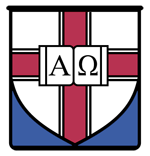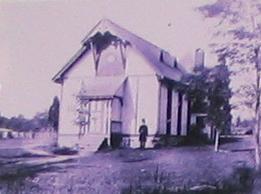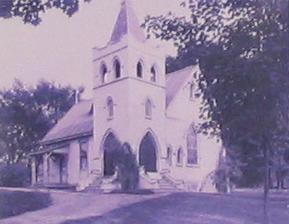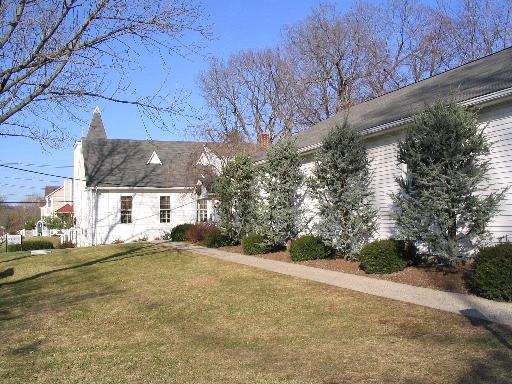
St. Luke's
Reformed Episcopal Church
Church History:

St. Luke’s R.E. Church was started in 1891 with a small building at the corner of South Street and Central Avenue in what was once a rural farming district nestled in the Watchung hills of central New Jersey.

Expansion in the early 20th century added a bell tower and remodeled the exterior. A new curved driveway led to a roofed porch entrance for the convenience of those new-fangled motorized carriages.
In 1987 a new sanctuary was built onto the opposite side of the building, tripling our cramped worship space.

An
Overview of the
Reformed Episcopal Church
The Reformed Episcopal Church was organized in New York City in 1873 by eight clergymen and twenty laymen who were formerly priests and members of the Protestant Episcopal Church. A long debate over the excessive ritualism and exclusive attitude of the Protestant Episcopal Church toward other denominations lay behind the separation. The immediate cause of the division lay in the participation of Bishop George David Cummins, Assistant Bishop of Kentucky, at a Communion Service held in the Fifth Avenue Presbyterian Church in New York City. In the face of criticism and with the conviction that the evangelical and catholic nature and mission of the Protestant Episcopal Church were being lost, Bishop Cummins resigned as Assistant Bishop of Kentucky and transferred his Episcopal oversight to a new jurisdiction called the Reformed Episcopal Church.
Doctrine and organization of the Reformed Episcopal Church are similar to that of her parent Church with several important exceptions:
Holy Scripture is the highest authority in the Reformed Episcopal Church.
The Reformed Episcopal Church vigorously holds to the plain understanding of the 39 Articles of Religion of the English Reformation and adopted them as the doctrinal standard of the Church at her founding.
Clergymen ordained as Presbyters in other churches may be received into the ministry of the Reformed Episcopal Church. If their ordination is irregular, such orders are regularized by the laying on of hands of a Bishop. Members are admitted on letters of dismissal from other Protestant denominations.
Worship is liturgical. At Sunday morning worship, the use of the Prayer Book, recently revised to conform with the 1662 Book of Common Prayer (BCP), is required. The 1928 BCP is also authorized for use. At other services the use of the Prayer book is optional while at any service extemporaneous prayer may be used by the minister.
The triennial General Council of the Reformed Episcopal Church is not like the General Convention of the Episcopal Church USA since her bishops do not constitute a separate house but, rather, vote with the Clergy.
The Reformed Episcopal Church has added over fifty new parishes and missions in the last decade. Foreign missions are maintained in India, Liberia, France, Uganda, Brazil, and Germany. In India there is a primary school, hospital, and orphanage. In Liberia there are twenty parishes with a membership of over 3000.
There are three Theological Institutions within the United States (Philadelphia, PA; Summerville, S.C.; Houston, TX).
The Reformed Episcopal Church is in fellowship through concordat with the Free Church of England (Otherwise known as the Reformed Episcopal Church in England) and the Anglican Province of America. There are 13,422 members in 137 local parishes and missions.